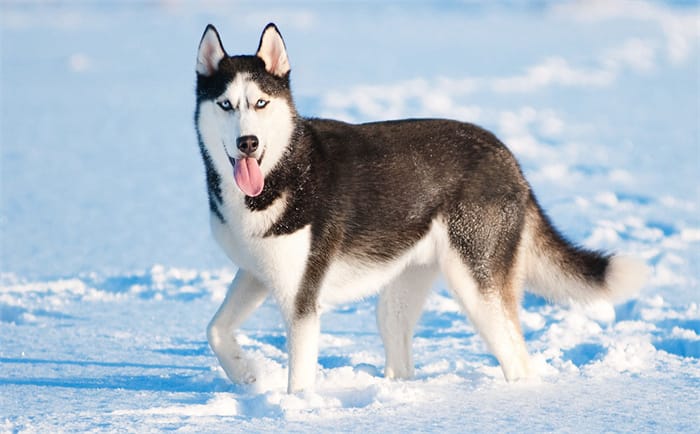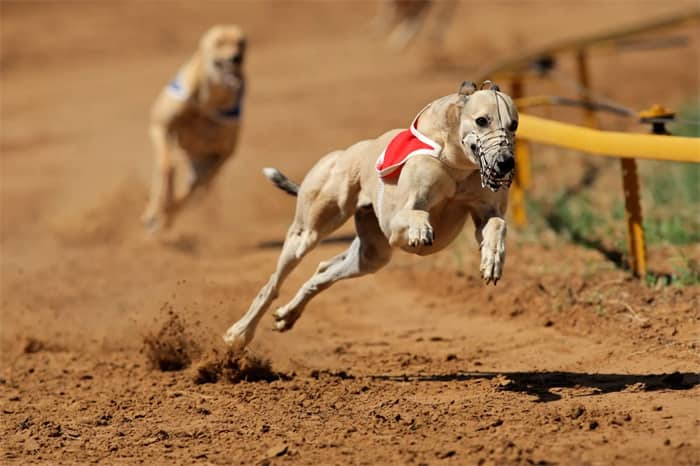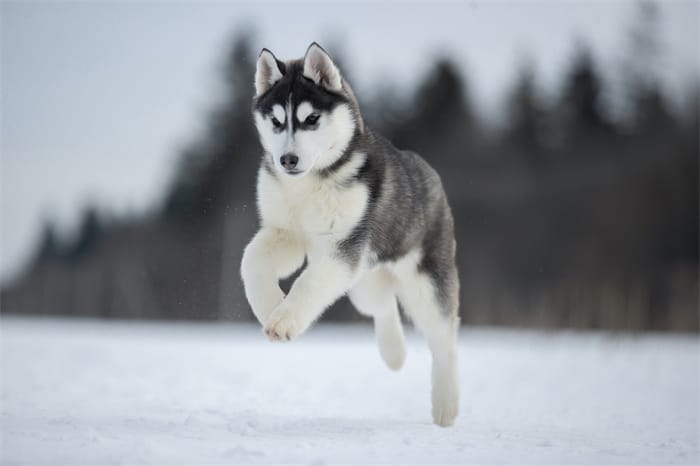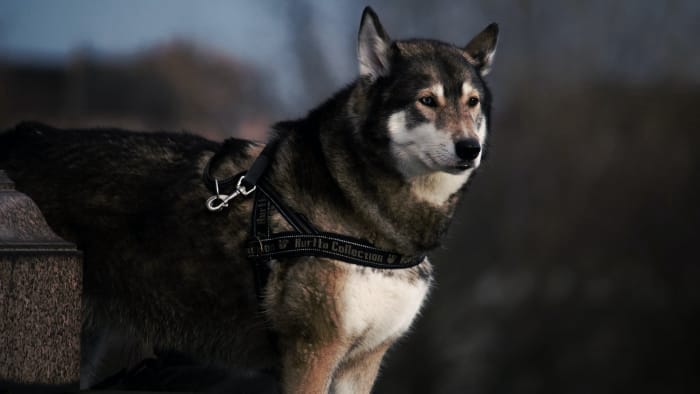How Many Bones Does a Dog Have
Minerals, mostly calcium and phosphorus, make up bones, which are an essential component of the skeletal system, the framework upon which all vertebrates are built. It safeguards the interior organs and body tissues. It has been said that the bones serve as the body’s structural framework. The ribcage shields the heart and lungs, two important organs in the chest. The brain and eyes are shielded by the skull. The bones of the dog’s internal ear structure are for sound transmission, whereas the dog’s leg bones allow for mobility.

Therefore, while bones can serve a variety of purposes, the most crucial ones are to support and safeguard the body’s major organs.
How many bones does a dog have?
Around 319 and 321 bones make up a normal dog’s body. More than any other species, the dog’s size and skeletal composition deviations are extremely serious. The visceral, appendicular, and axial components of the dog’s skeleton are divided into these three sections. The sternum, spine, ribs, head, and neck are held by the axial section, which is the main portion of the body.
The inner ear and the appendicular skeleton, which includes the feet and leg skeleton, are small bone structures that are part of the visceral section of the body. The canines’ collarbones are replaced with cartilage known as the “rudimentary collarbone,” and their shoulders are disjointed. Since they don’t have a collarbone, they can run more fluidly and with longer strides thanks to their enhanced flexibility.

Shorter tails have fewer vertebrae than longer tails, which is the primary factor influencing the number of bones. Additional bones may also be present in the hind dewclaws of some breeds.
- Ribs and sternum: 34
- The thoracic limb: 90
- The pelvic limb: 96
- Vertebral column : 50
- Skull and hyoid bones: 50
- Heterotopic skeleton (baculum): 1
Sectioning of the Vertebral Column Count of Bones/ Spinal column
There are roughly 50 irregular bones in the vertebral column, which are further split into five groups.
- Vertebra 7 of the neck
- 13 thoracic vertebrae, 7 in the lumbar region
- Sacrum or the sacral 3
- 19, 20 Caudal vertebrae
Hyoid and a skull
Depending on the breed, a dog’s skull and hyoid bones might range from 36 to 50. This bone aids the dog in developing its facial anatomy. Cranium bones and face bones make up the two catalogues that include the bones. Occipital, supraoccipital, and basioccipital bones, as well as parietal and interparietal bones, make form the dog’s cranium. Sphenoid (presphenoid and basisphenoid) bone, frontal bone and an ethmoid bone is a temporal bone.

Facial bones
Incisive, nasal, maxillary, zygomatic, and palatine bones make up the facial bones of a dog’s skull. The mandible, dorsal and ventral concha, and the lacrimal, pterygoid, and vomer bones are also the part of facial bones in a dog.
Sternal limb
Dogs have 90 bones in their thoracic limb, which control their movement. Each of their two thoracic limbs contains 45 bones. As follows:
The bones that make up the shoulder girdles are the scapula, clavicle, and coracoid. The humerus is a dog’s arm bone, often known as the brachium bone. The ulna and radial bones make up the forearm, or antebrachium. Manus bones include the phalanges, carpal, and metacarpal. Proximal and distal sesamoid bones can be seen in the thoracic limb.

Genital limbs
Similar to the thoracic limbs, a dog’s pelvic limbs, which have 48 bones apiece, let it move. These limbs include:
- 1. The ilium, ischium, and pubis of the Os coxae.
- 2. The dog’s femur is its thigh bone.
- 3. The tibial and fibula bones of a dog’s pelvic limb make up the leg bones.
- 4. The patella of the stifle joint is composed of a large sesamoid bone.
- 5. The bones of the hind paw’s tarsal, metatarsal, and phalanges are located underneath.
- 6. Both the proximal and distal sesamoid bones are found in the pelvic limb.
- 7. The entire skeletal system of a dog is made up of bone along with cartilage, tissues, and ligaments.
How long does it take for a dog’s skeleton to fully develop?
Well, that depends on the dog’s breed. The majority of dog breeds, meanwhile, take 12 to 18 months to reach their full skeletal maturity.
A larger breed, such as a Rottweiler or Mastiff, will often take longer to mature 18 to 20 months, whereas a smaller breed may mature entirely and cease growing in as little as 6 to 8 months to its full.

What are the differences between dog bones and human bones?
There are numerous noteworthy contrasts between the bones in dog skeletons and human skeletons, aside from the fact that we lack tails. One difference between humans and dogs is the number of bones each has. Dogs have 321 bones in their bodies, but humans only have 206. The majority of scientists believe that teeth and vertebrae are responsible for the dog’s additional bones. However, the majority of the bones in humans are found in the hands and feet. There are 106 bones in total in just the hands and feet of humans, with 27 bones in each hand and 26 in each foot. In addition to having more bones than humans, dogs also have denser, tougher, and less porous bones.
Importance of bones to dogs?
Minerals, mostly calcium and phosphorus, make up bones, which are an essential component of the skeletal system, the framework upon which all vertebrates are built. It safeguards the interior organs and body tissues. It has been said that the bones serve as the body’s structural framework. The ribcage shields the heart and lungs, two important organs in the chest. The brain and eyes are shielded by the skull. The bones of the dog’s internal ear structure are for sound transmission, whereas the dog’s leg bones allow for mobility. Therefore, while bones can serve various purposes, the most crucial ones are supporting and safeguarding the body’s major organs.

What are the common bone diseases in dogs?
Some common bone and joint issues can be predisposed in dogs. Three of the more prevalent illnesses are as follows:
Lumping patella
A dislocated kneecap that slides out of its usual groove is known as a luxating patella. It resembles a human “trick knee” in many ways. Your dog can’t move or extend his knee correctly when it happens. As a result, there may be pain, an irregular gait, limping, and eventually arthritis. 15–25% of dogs with luxating, patellas will eventually harm their cranial cruciate ligament (CCL) as well because luxating patella can also create chronic inflammation in the joint that leads the ligaments to break down. Additionally, the groove gets shallower the farther the kneecap is from its natural position, which makes dislocation of the kneecap more likely.

Panosteitis
An inflammatory condition of the bones known as panosteitis is also referred to as “long bone pain” or simply “pano.” Inflammation on the outside of the long bones, typically in the legs, is known as pano in growing puppies. The inflammation may affect several bones simultaneously or even move from one bone to another.

Osteochondrosis
Osteochondrosis is characterised by cartilage loss, which weakens the joints and eventually reduces the strength of the bones. In severe situations, the cartilage may even entirely separate from the joints. The best method to treat and prevent osteochondrosis is to provide your dog with a healthy, calcium-rich diet.
How long can a broken dog bone recover?
In general, healing from a broken bone will take at least 4 weeks in young puppies and at least 8 weeks in adult dogs.
Depending on which bone was broken and how badly it was broken, your dog’s broken bone may take a certain amount of time to mend. These details can be ascertained by your veterinarian, who can also estimate the healing time for the broken bone in your dog.
How to add nutrition to dog bones?
It is much better to ensure that dogs are getting the vitamins and protein they need from their diet and avoid giving supplements unless your veterinarian advises you to. Although supplements are effective, they may have unfavorable side effects if a dog receives an excessive amount of them. Your veterinarian will order blood tests to evaluate the level of calcium in your dog’s blood before making a calcium supplement recommendation. For instance, consuming too much calcium can result in malformed bones and other negative repercussions.
What’s the biggest bone in a dog?
The largest and heaviest canine bone is the femur.

What’s the smallest bone in a dog?
The smallest bone, the stapes, has a thin head (Sh), a wide foot plate (Fp), and an attachment point for the tendon of the stapedius muscle near to the head.
How many bones does a cat have?
The skeleton of the cat and the human are similar in many ways. Although the cat has 230 bones as opposed to 206, many of them are the same as those found in humans. Humans have 12 ribs, whereas cats have 13. Cats have clavicles (collar bones) but are not connected to other bones like humans.
Do dogs have more bones than cats?
Cats have a unique skeleton with about 230 bones. Comparatively, canines like the Great Dane, which can have up to 321 bones, have far less. The skeleton of a cat is built to provide them strength and flexibility.
What animal has the most bones?
Snakes are estimated to have the most bones. A python has 600 vertebrae, which equals about 1800 bones in its body.






